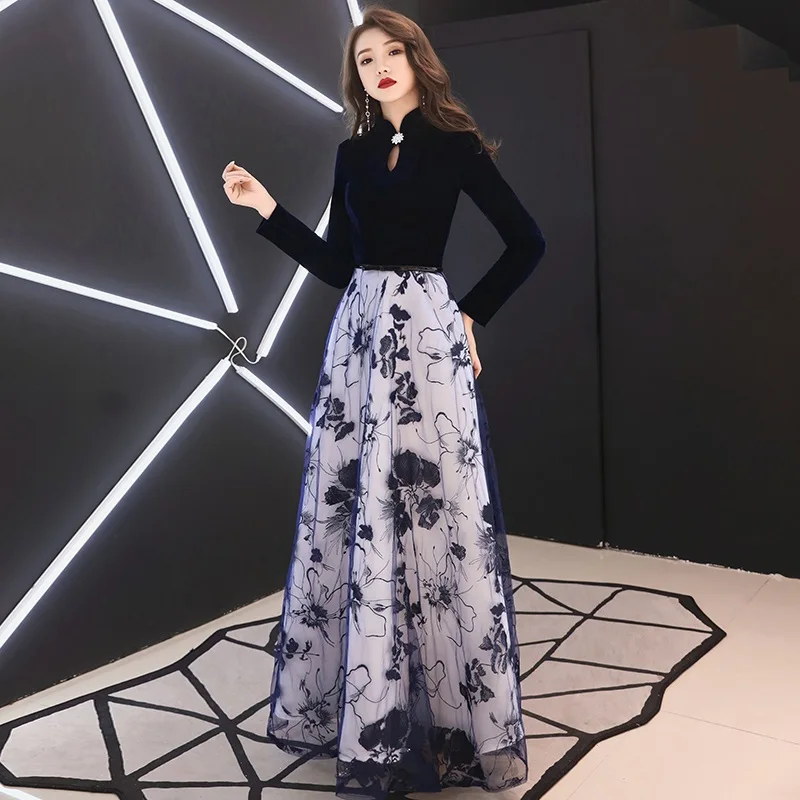
Well, you can question the wisdom of the last photo, but believe me, this fracas would have happened had just the other pictures been posted. I don’t, as it’s not making fun of a culture but imitating (I think) a gesture thought to be Chinese (it’s also Indian, Nepalese, and used in many other countries): Daum looks lovely, though of course the last picture might be considered offensive by some. You can see the four sub-pictures by clicking on her tweet, but here are three of them. Daum made the deadly mistake of liking a quipao she saw in a Salt Lake City vintage clothing store, saying that she was “immediately drawn to the beautiful red grown and was thrilled to find a dress with a modest neckline.” She wore it to the prom and posted the following pictures on Twitter. Here, for example, is a quipao society I photographed in a mall in Macao on my last visit to Hong Kong: While this was worn in China (and still is by societies that try to preserve the dress style), it was really a form of women’s clothing invented in Shanghai in the 1920s and limited to wealthy socialites. What happened is that 18 year old Keziah Daum, a high school student from Utah, decided to wear to her senior prom a quipao, or traditional Chinese dress with a high neckline and slit skirt.

BuzzFeed (click on screenshot below) and other sites like the Washington Post and the BBC describe a particularly ridiculous example:

In principle this could be offensive, as in the use of blackface, but more often than not it’s simply the appreciation by one culture of another. One of the topics that often triggers unwarranted offense is cultural appropriation-the adoption by one culture or ethnicity of food, clothing, music, or other aspects of a different culture. I’m tired of all the backlash and hate when my only intent was to show my love.Some people are permanently poised to be offended in fact, you’d think they get pleasure out of being offended. I am in no way being discriminative or racist. “To everyone who says I’m ignorant, I fully understand everyone’s concerns and views on my dress,” she wrote on Twitter. “Nowadays, if you see a woman wearing a cheongsam, she’s probably a waitress in a restaurant or a bride.”īack in the United States, Daum, overwhelmed with the sudden wave of both praise and condemnation, was not backing down. “To Chinese, it’s not sacred and it’s not that meaningful,” said Hung Huang, a Beijing-based writer and fashion blogger, in an interview. Western “fast fashion” has taken over, though the cheongsam has made something of a comeback among some official figures, like the country’s first lady, Peng Liyuan. These days, it is rare to see Chinese women wearing cheongsams in the street. It was only in the 1920s and ’30s, when Western influence began seeping into China, that the qipao or cheongsam was reinvented to become the seductive, body-hugging dress that many think of today.įor many cinephiles, it has become inextricably associated with Maggie Cheung, the actress who wore a stunning array of cheongsams in Wong Kar-wai’s 2000 film In the Mood For Love.

In its original form, the dress was worn in a baggy style, mostly by upper-class women during the Qing dynasty, which ruled China for more than 250 years, until 1912. Others were quick to point out that the qipao, as it is known in China, was introduced by the Manchus, an ethnic minority group from China’s northeast – implying that the garment was itself appropriated by the majority Han Chinese. “So does that mean when we celebrate Christmas and Halloween it’s also cultural appropriation?” asked one WeChat user, Larissa.
“From the perspective of a Chinese person, if a foreign woman wears a cheongsam and thinks she looks pretty, then why shouldn’t she wear it?” If anything, the uproar surrounding Daum’s dress prompted many Chinese to reflect on examples of cultural appropriation in their own country. “It’s ridiculous to criticize this as cultural appropriation,” Zhou Yijun, a Hong Kong-based cultural commentator, said in a telephone interview. “I am very proud to have our culture recognized by people in other countries,” said someone called Snail Trail, commenting on a post of the Utah episode by a popular account on WeChat, the messaging and social media platform, that had been read more than 100,000 times.


 0 kommentar(er)
0 kommentar(er)
